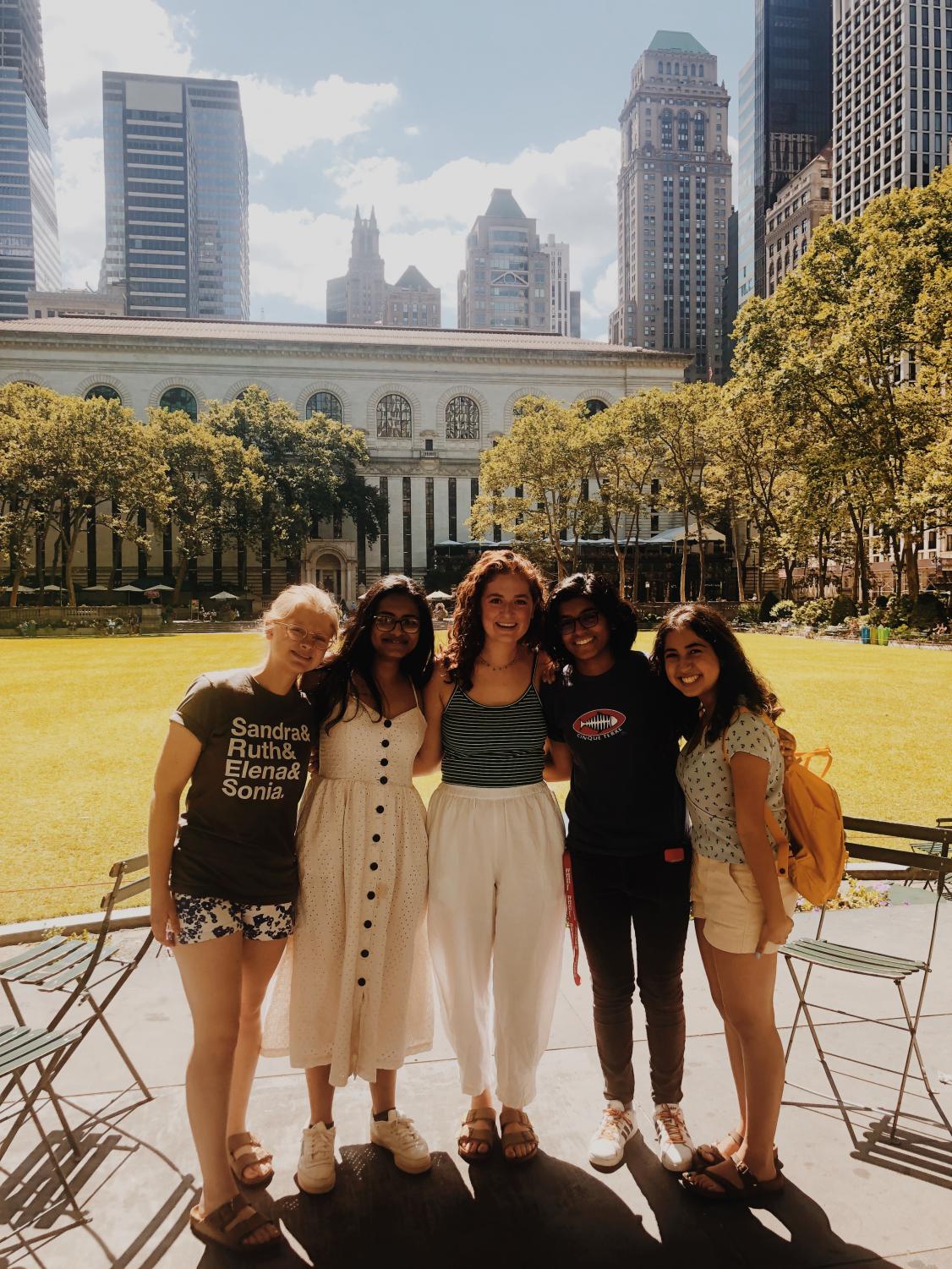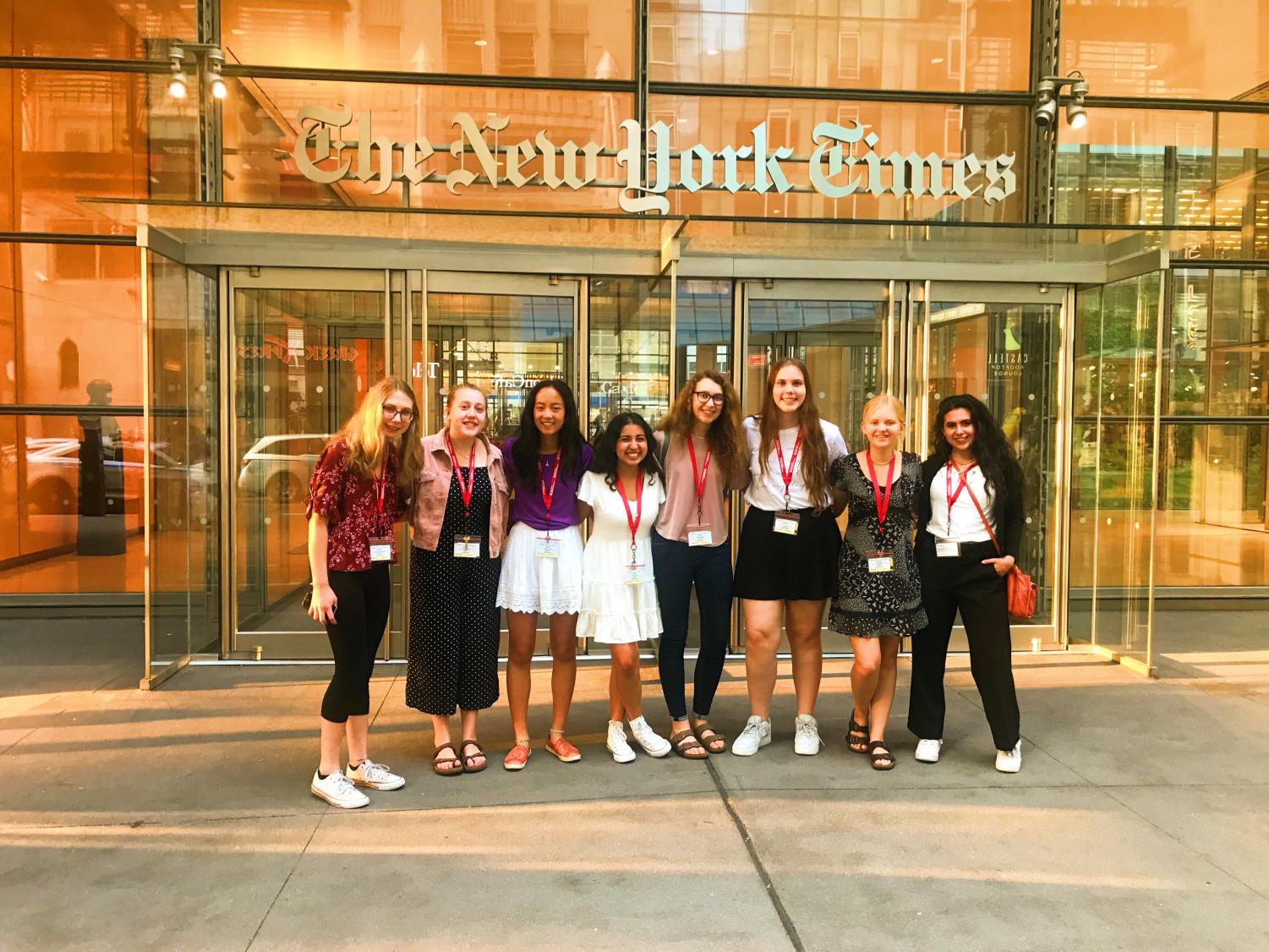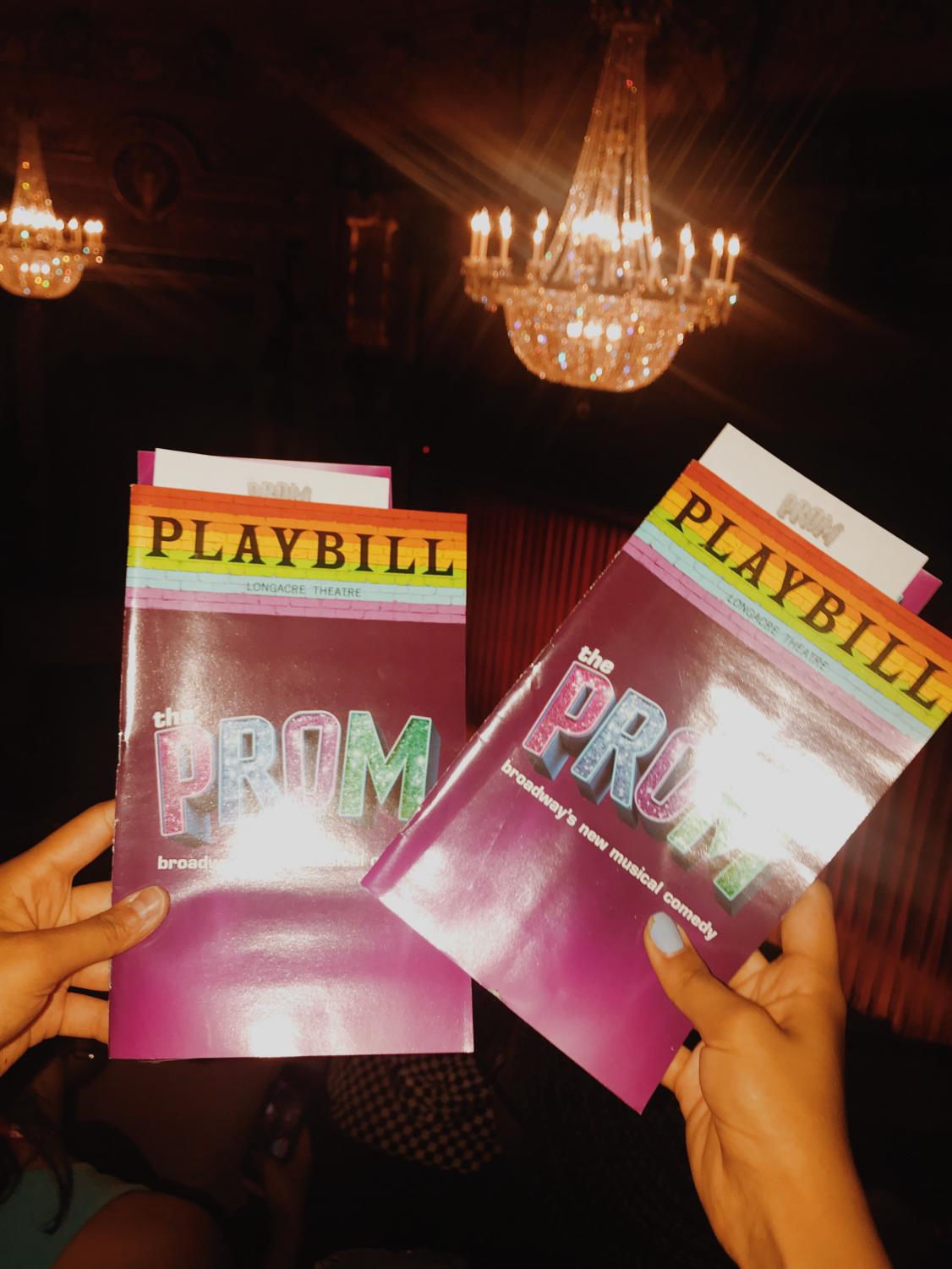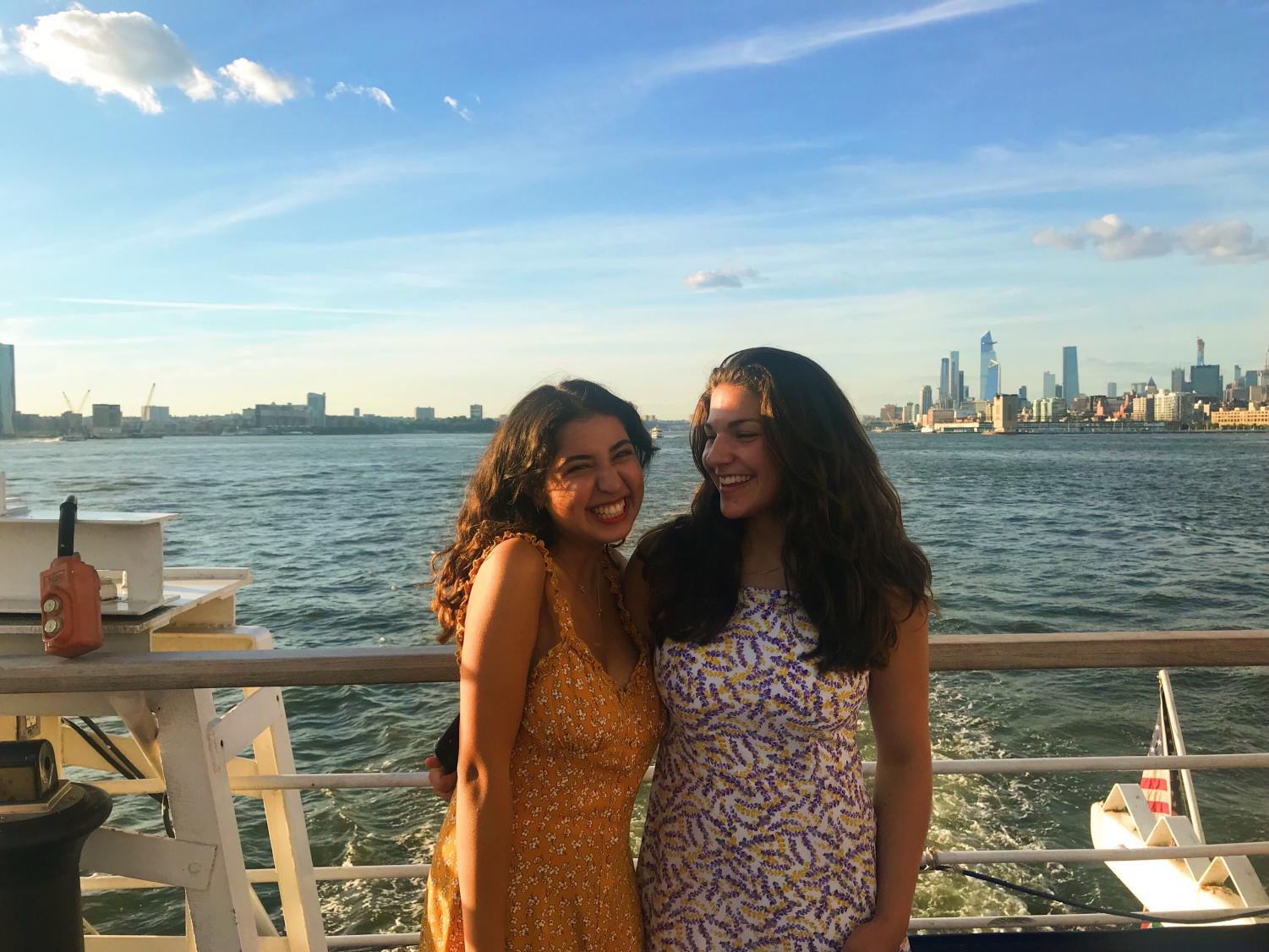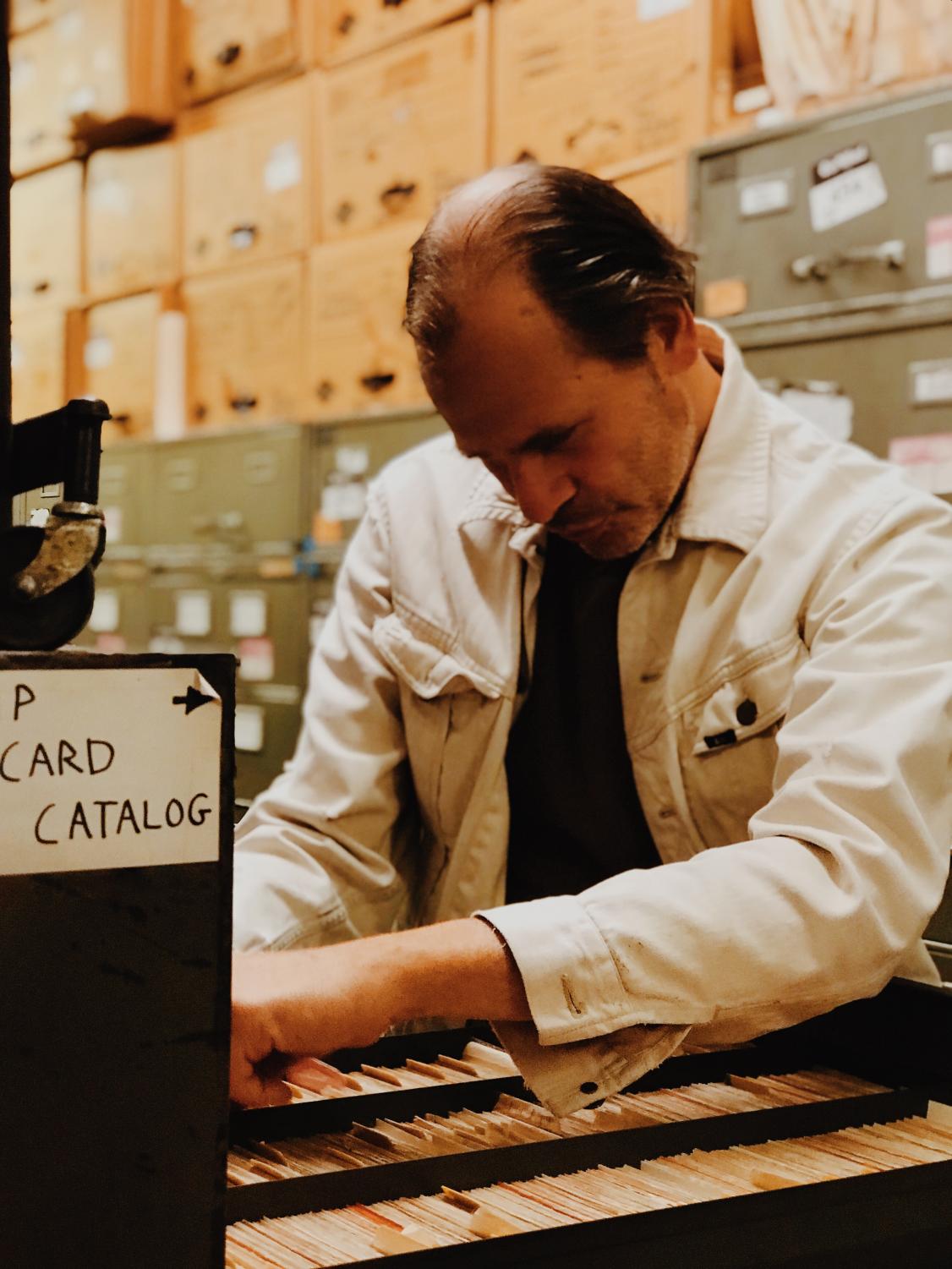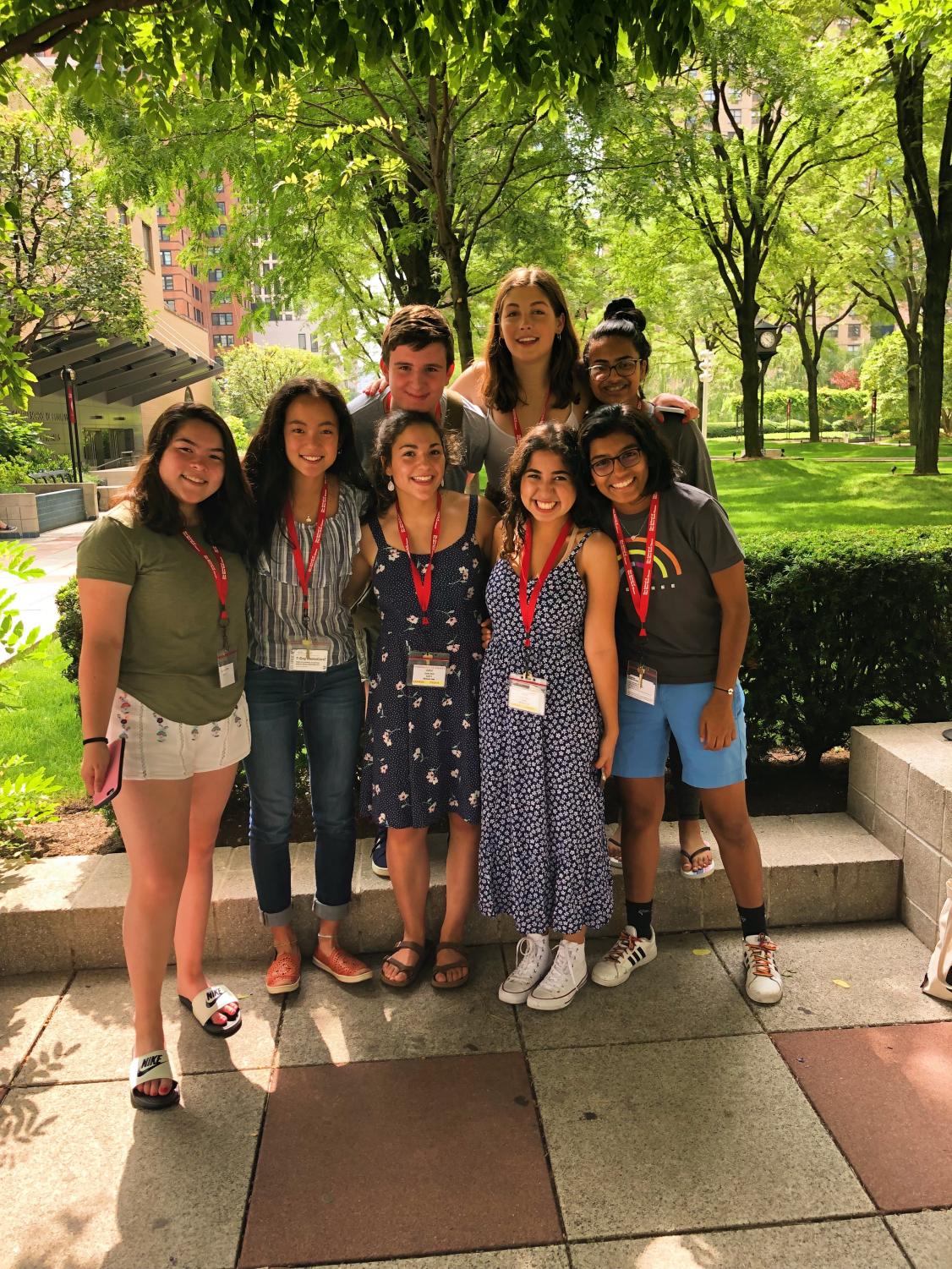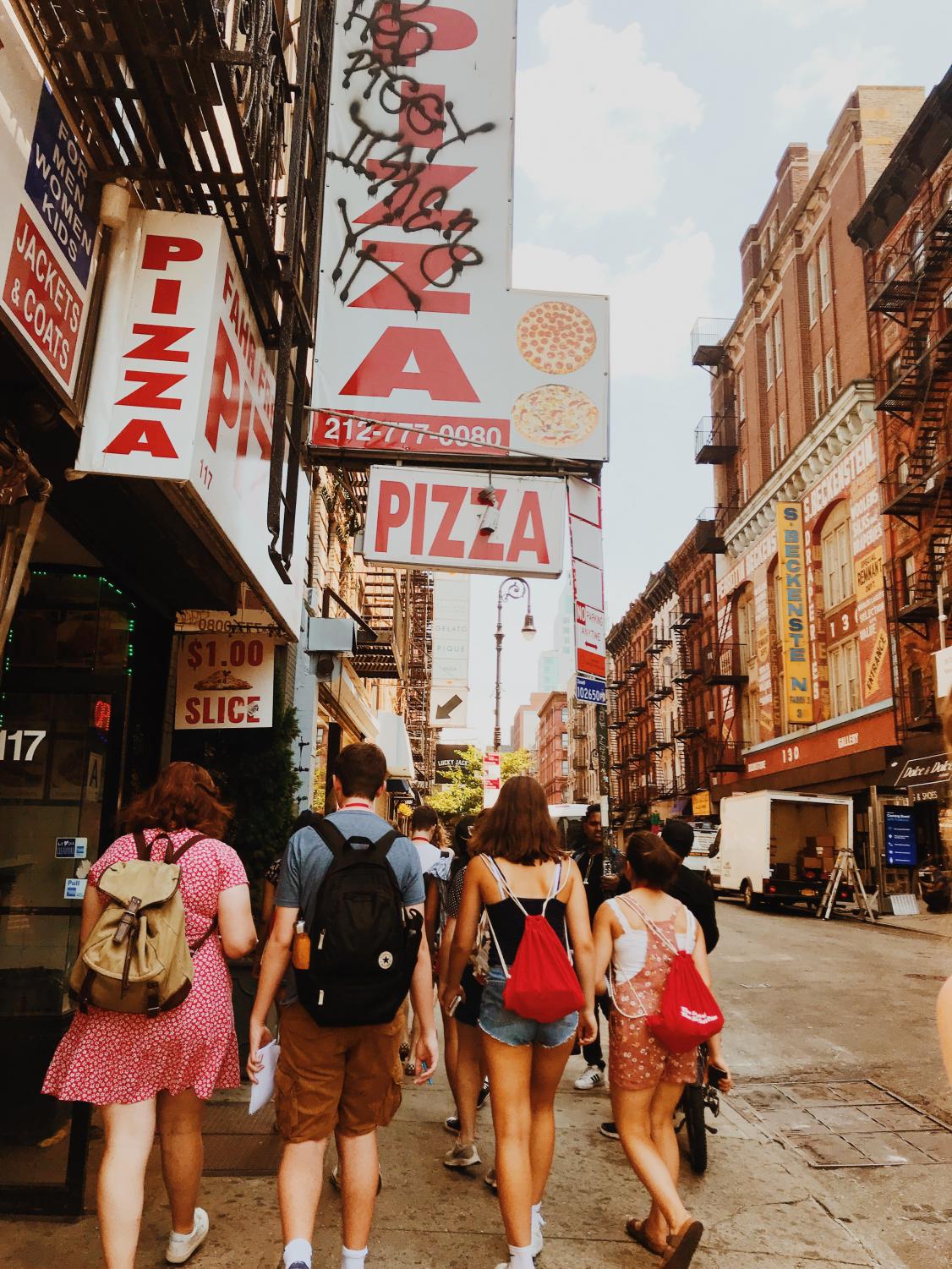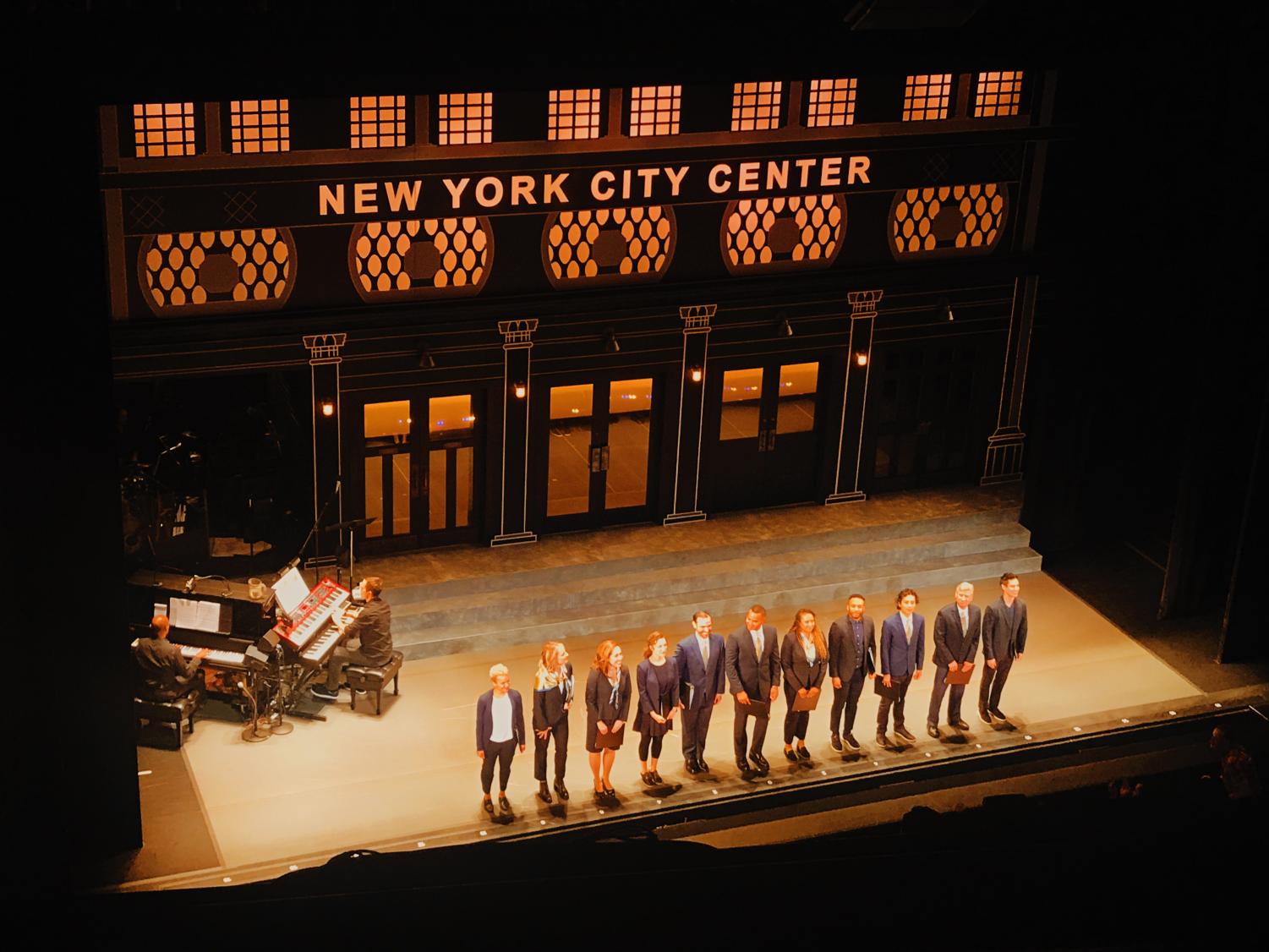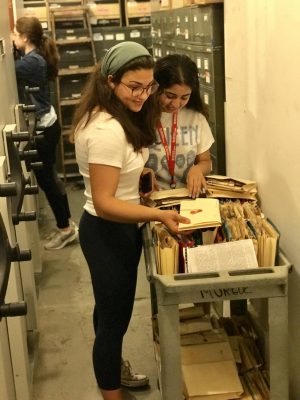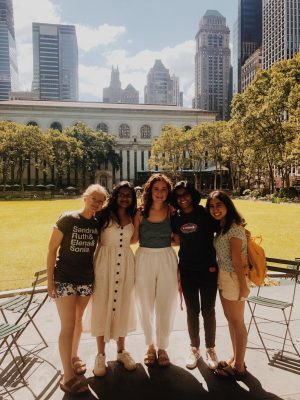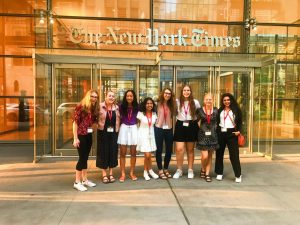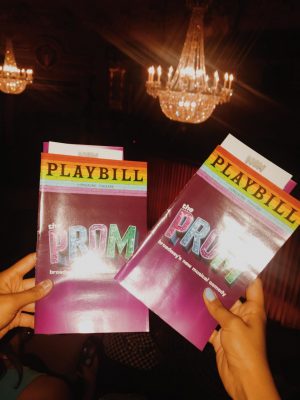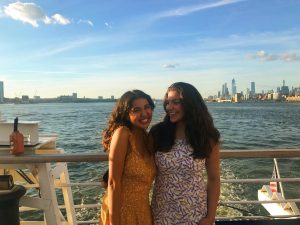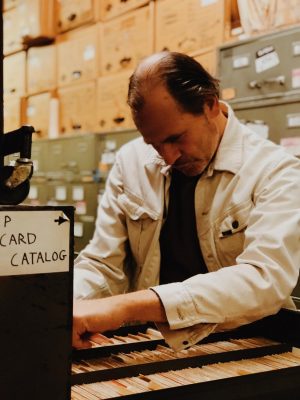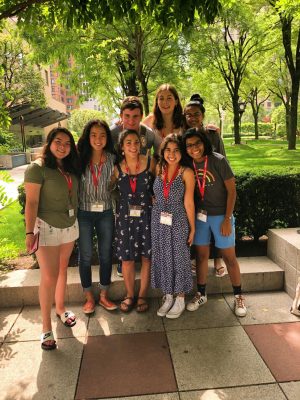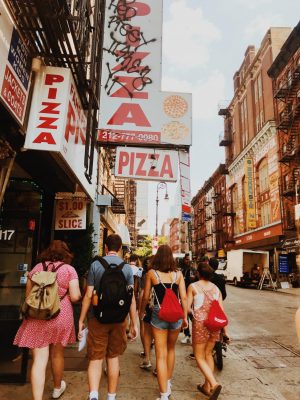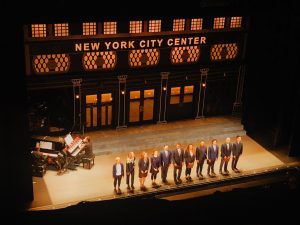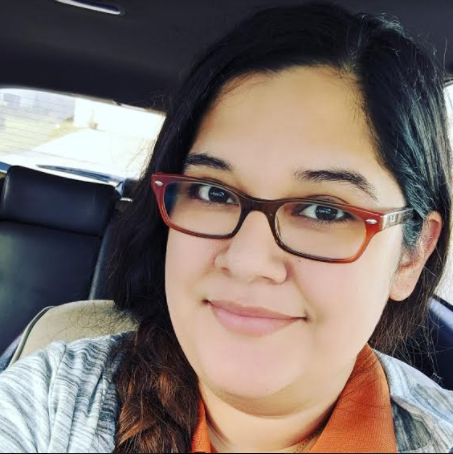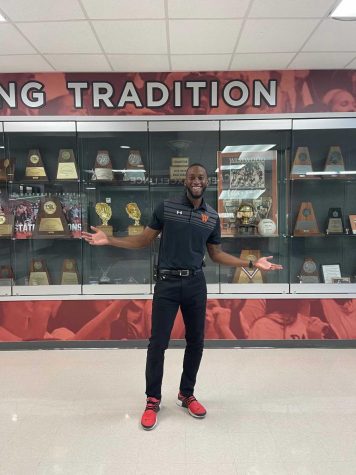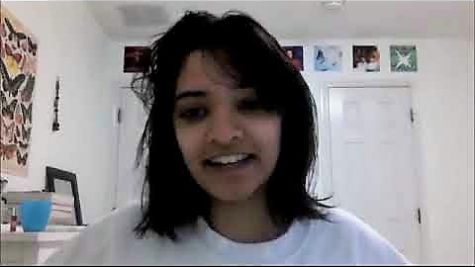Student Keana Saberi ’22 Explores Journalism in New York
As I began writing my application, I was frantic. Looking over my writing, I tried to summarize my love for journalism and my personality in a 500-word brief. Truth is, I was racking my brain for how I could best communicate to the School of The New York Times (SoNYT) acceptance committee that I was a fit for their summer program. The SoNYT, a relatively new summer program, drew my attention not only because of its link to one of the world’s best-known newspapers but also because I had heard of other people’s experiences. I wrote and wrote, rhapsodizing about both my passion for words and my eagerness to learn about journalistic values. All I had to do then was wait to see whether or not I’d made the cut. After a couple of months of waiting, the news came that I was accepted and my heart leaped. Little did I know it would be the best two weeks of my young life.
Fordham University was to be my home for the next two weeks. During the summer months, the university opened its doors to the SoNYT and its students to use the campus and dorms. Adjacent to Lincoln Center, in the heart of the city’s Upper West Side, the area was a buzzing cultural scene, from the Metropolitan Opera to live jazz and practically everything in between. It was perfect for budding journalists to explore, and was partially where my new friends and I spent our free time.
When classes began I was itching to delve into my course, Writing the Big City, which was all about exploring New York; I couldn’t wait to immerse myself in New York City neighborhoods and learn about the culture of the Big Apple, unfiltered. Mrs. Patricia Cohen, the Times journalist known for covering the US economy, was my lead instructor. The class was filled with speakers; journalists, both retired and still reporting, and they discussed everything, from why they chose to pursue journalism to the fact that real hard hitting journalism is key to a proper democracy. We students took action and interviewed people in the fervent rush of Columbus Circle. Usually people shooed us off, but occasionally, if we were persistent enough, a New Yorker on their way to work or a tourist would let us ask them questions. We would pursue different angles until we found something unique about them or their life story – the chocolate chip, Mrs. Cohen would tell us, referring to that one thing that gave the story meaning and purpose.
With our floor groups, we visited the New York Times to tour the building. First we saw a large conference room where editors gathered and discussed hard hitting news stories. Next, we went into a room that was entirely dedicated to all the Pulitzer prizes the New York Times’ journalists had been awarded since the first years of the newspaper’s opening. Photographs of spectacular and committed journalists inspired and awed us all. I was in a trance in the legendary building, picturing myself up on that wall among the greats.
One day, we visited the archival files of the New York Times and I got to see the history of the newspaper, years and years of news clippings and black and white photographs. The file room called the morgue (yes, the morgue!) was run by Mr. Jeff Roth, an archivist, who had single-handedly reorganized photographs and clippings he said had been misfiled likely for 50 years. Mr. Roth let us explore the clippings, seeing news pieces and discovering interesting little things tucked away through the years. The clippings were in the process of being digitized, Mr. Roth said, telling us that the archive room was being used less and less. But still, though the room didn’t have the hustle and bustle it once had, Mr. Roth had kept the room as a treasure trove of memories. He had kept little gems from the old archival room and hung them on the wall, old photos and articles and sketches of the New York Times building. Mr.Roth showed us how the newspaper used to be drawn out, edition by edition. The archives showed me just how spectacular the newspaper business is and how it has evolved through the years, spanning generations of journalists.
Our course spent a night out with Mrs. Cohen to see Working: A musical in the New York City Center. The atmosphere was just like the movies, A New York theatre with bright stage lights and high ceilings. Working depicted the workforce in New York in all its harsh realities, which was a subject we had been covering through the course. The musical was witty, truthful and engaging and gave insight into how people worked to make ends meet.
Exploring the workforce even more, our course spent time in the Lower East Side to learn about local businesses and changing neighborhoods from a shop owner, as well as touring the Brooklyn Navy Shipyards to learn about the history and the artistic companies now employed there. We also spent time at the New Lab, getting insight on the new innovations being created and spending time at the High Line to write descriptions on the sensory details of the sprawling upscale attraction.
Aside from the immense and fulfilling learning, the social aspects of the SoNYT were also incredible. The people I met came from all across the US and even from other countries. Though we came from different backgrounds we all shared our equal love of journalism. In our free time, we explored vintage shops and devoured life changing pizza in the West Village, navigated the challenges of the Subway on our way to Chelsea Market, or just spent time in the green courtyard quad of Fordham, listening to music. Our floor group saw the Tony Award Winning Musical The Prom and the whole program took a yacht trip across the Hudson river and saw the Statue of Liberty during sunset.
“The School of the New York Times was definitely the best experience of my life,” sophomore Annabelle Langford from North Carolina said.“ I got to spend two weeks in my favorite city on the planet studying something I feel truly passionate about. The guest speakers were some of the best in their respective fields and getting to learn from them and the instructors was something that I will never take for granted. The friendships I made were incomparable and I hope to stay in touch with these people and bounce ideas off of them for years to come.”
Though the program is tied to a prestigious newspaper, most students didn’t know what to expect from the summer academy and found it was better than they expected.
“The SoNYT program is unlike any other journalism program I have participated in. Their concept that New York is our classroom motivates students to scope out fascinating stories and creates an unforgettable experience,” sophomore Emily Stull from California said.
Overall students were able to connect and form strong friendships with people they would have likely otherwise never met.
“I went into SoNYT with the mentality that I would have no friends and too much work when I was there. Safe to say I changed my opinion. I met great people and had an experienced teacher who helped me advance in my writing skills,” sophomore Auguste Lapomme from New York said.
By allowing students to grow academically as well as helping them create social connections, the SoNYT is a spectacular opportunity for high school students to explore the journalism field. Having hands-on experience and being taught by professional journalists equips students with the knowledge to follow their passion. Now, back in Austin, I can’t wait to apply the skills I learned from the program into my school’s own journalism organization.
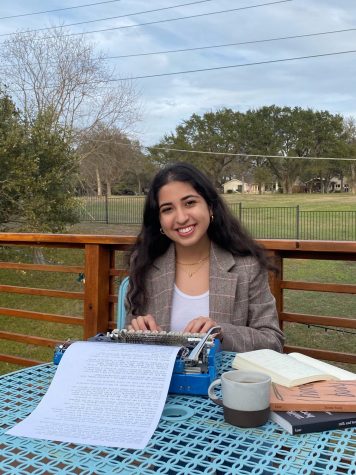
Class of 2022
Looking forward to my senior year, I am ecstatic to be serving as Editor in Chief of an organization I so cherish. Writing is of the utmost...




